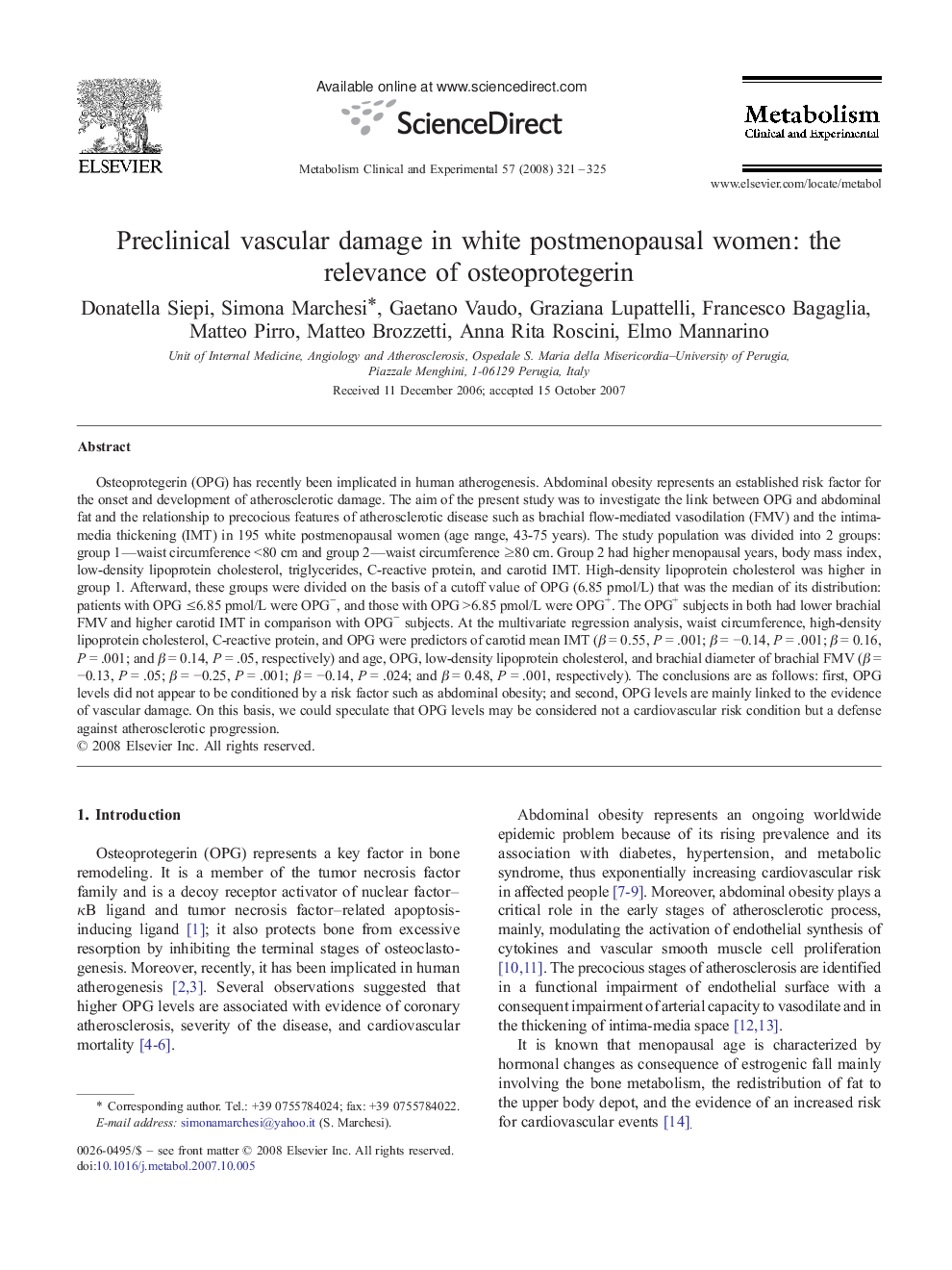| کد مقاله | کد نشریه | سال انتشار | مقاله انگلیسی | نسخه تمام متن |
|---|---|---|---|---|
| 2807219 | 1157153 | 2008 | 5 صفحه PDF | دانلود رایگان |

Osteoprotegerin (OPG) has recently been implicated in human atherogenesis. Abdominal obesity represents an established risk factor for the onset and development of atherosclerotic damage. The aim of the present study was to investigate the link between OPG and abdominal fat and the relationship to precocious features of atherosclerotic disease such as brachial flow-mediated vasodilation (FMV) and the intima-media thickening (IMT) in 195 white postmenopausal women (age range, 43-75 years). The study population was divided into 2 groups: group 1—waist circumference <80 cm and group 2—waist circumference ≥80 cm. Group 2 had higher menopausal years, body mass index, low-density lipoprotein cholesterol, triglycerides, C-reactive protein, and carotid IMT. High-density lipoprotein cholesterol was higher in group 1. Afterward, these groups were divided on the basis of a cutoff value of OPG (6.85 pmol/L) that was the median of its distribution: patients with OPG ≤6.85 pmol/L were OPG−, and those with OPG >6.85 pmol/L were OPG+. The OPG+ subjects in both had lower brachial FMV and higher carotid IMT in comparison with OPG− subjects. At the multivariate regression analysis, waist circumference, high-density lipoprotein cholesterol, C-reactive protein, and OPG were predictors of carotid mean IMT (β = 0.55, P = .001; β = −0.14, P = .001; β = 0.16, P = .001; and β = 0.14, P = .05, respectively) and age, OPG, low-density lipoprotein cholesterol, and brachial diameter of brachial FMV (β = −0.13, P = .05; β = −0.25, P = .001; β = −0.14, P = .024; and β = 0.48, P = .001, respectively). The conclusions are as follows: first, OPG levels did not appear to be conditioned by a risk factor such as abdominal obesity; and second, OPG levels are mainly linked to the evidence of vascular damage. On this basis, we could speculate that OPG levels may be considered not a cardiovascular risk condition but a defense against atherosclerotic progression.
Journal: Metabolism - Volume 57, Issue 3, March 2008, Pages 321–325